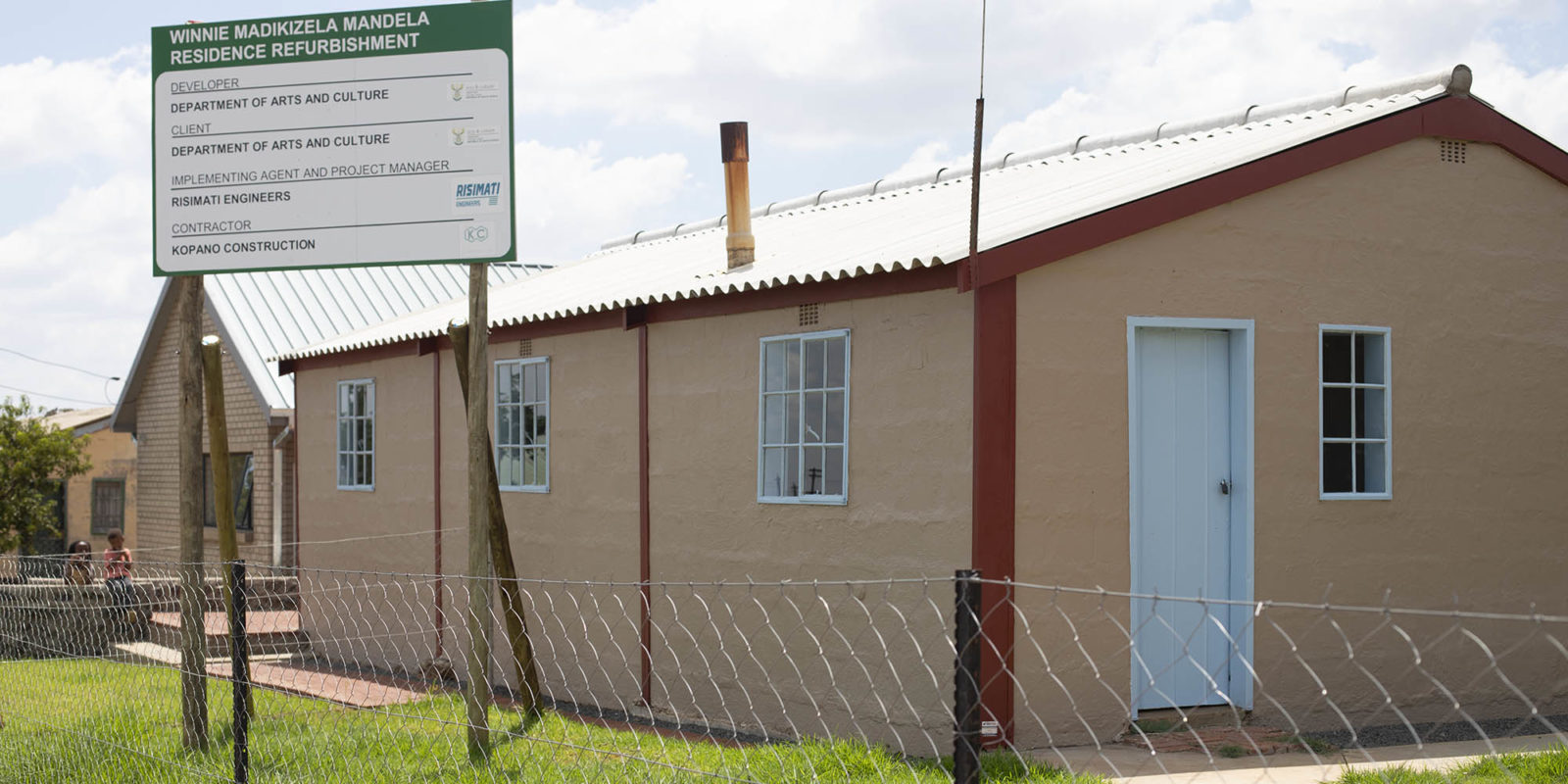Tankwa Karoo National Park
It is recommend that you travel through the Park, with a vehicle with high ground clearance and good tyres. As all roads in the Park are gravel/dirt roads. No fuel is available in the Park. No shops, restaurants, public phones or ATMs in the Park. As outdoor lighting in camps is limited, a torch/headlamp is required when walking outside at night.
The Park has a number of off-road tracks with two major 4x4 routes for the more advanced enthusiast, namely: 'Leeuberg 4x4 Eco-trail and the Watervlei 4x4 Route'. Situated 18km away from the Park Reception is Elandsberg. This little National Park is very the isolated and hence the romantic Elandsberg Cottages where initiated in September 2006 and completed by April 2008.
The development of the Elandsberg Wilderness Camp was initiated in September 2006 and completed by April 2008. The rustic design of the cottage gives the visitor a true bushveld experience topped with a striking evening sunset over the 'Roogeveld' Escarpment. Each Cottage boasts beautiful views of the Karoo plains and imposing Roggeveld Escarpment. The cottages are spaced far enough from each other maintaining privacy, yet close enough for groups to book different cottages together. Not to be missed is the annual Tankwa Birding Bonanza held during April, where birders, beginners to expert twitchers, can have a friendly competition to test their knowledge against others'. The event is hosted by the SANParks Honorary Rangers and has various sponsors.
The Tankwa Karoo National Park (TKNP) is part of a renowned arid biome with an unrivaled diversity, in succulents. The Park has been subject to anthropogenic pressures, (The meaning of ANTHROPOGENIC is of, relating to, or resulting from the influence of human beings on nature), such as heavy grazing with climate change being a recent threat. This study investigated changes in vegetation productivity between 2000 and 2014 across six vegetation types using rainfall and satellite data. The Park is broadly divided into a plain at low altitude (316 m) receiving less rain and a wetter, higher terrain (1640 m). Long-term rainfall varied from 265 mm y-1 in the highland areas to 100 mm y-1 in the Plains. There was a significant corresponding rise in NDVI (The Normalized Difference Vegetation Index (NDVI)- is a measure of the amount and vigor of vegetation on the land surface and NDVI spatial composite images are developed to more easily distinguish green vegetation from bare soils.) The Lowlands to the Highlands (p < 0.001). This analyses suggests that vegetation has stabilised since the Park was proclaimed in 1984 because 81% of the Area has remained uniform, on average, despite considerable variation on a vegetation type basis. Only 18% of the Park had increasing productivity while just 2% experienced a decline. The patterns also suggest vegetation was principally controlled by rainfall, rather than a shift in land-use from Rangeland to Conservation. This implies that much of the presumably endemic degradation in the Succulent Karoo Biome is not evident in the Tankwa.
Tyume Valley, Eastern Cape
Macfarlan, Village in the Eastern Cape
Mpofu Nature Reserve
Villiersdorp
Storms River Mouth Rest Camp
Bloukrans Bridge Rest Camp, Southern Region
The Bloukrans Bridge is a stunning single span arched bridge, located in the Southern Cape region of South Africa. The bridge is one of three commissioned on the so called ‘Garden Route’ to improve the transport link between Port Elizabeth and Cape Town. Of the three the Bloukrans is the largest. The other two are the Bobbejaans River and the Groot River bridges, both are also concrete arch bridges. The mere mention of ‘Bloukrans’ puts a massive grin on the faces of adrenalin junkies from all over the world. And it is no wonder. Not only is this a gorgeous bridge from where to enjoy breathtakingly beautiful views of the Garden Route, it is also the highest commercial bungy jump on the planet. The Bloukrans Bungy Jump surpasses the position previously held by the Victoria Falls as the 'highest bungy in the world".
Established in 1990, the Otter Trail is officially the oldest and undoubtedly the most iconic hiking trail in South Africa. The trail, which runs along the spectacular coastline between the Storms River mouth and Nature’s Valley, was opened in 1968 and is considered one of the finest multi-day trails in the world. It is named after the shy, mostly nocturnal, Cape Clawless Otter which inhabits the estuaries and streams of the South African coast.
The Bridge has bungy jumping hotspots that are a staggering 216 metres (or almost 710 feet) high. It is for this reason that it is proud to have several world records associated with it; one of which is Scott Huntley’s 107 jumps in 24 hours. Mostly standard trail walking interspersed with “walk-through” river crossings. However, the main technical difficulty of the trail is the Bloukrans River crossing which involves swimming across the river and climbing up steep terrain by use of a rope. Although safe, there is absolutely no doubt that Bloukrans bungy jumps are going to get your heart pounding, stomach churning and hands quivering; no matter how much of a daredevil you are. The pendulum bungy technology ensures that each jump is as smooth as possible. The harness is a full-body one with an ankle connection for the ultimate in safety. For those not wanting to jump, or who want to experience even more of the thrills, there is a walkway under the bridge, which allows you to feel the rush of the dizzying heights without the heart-stopping horror of the fall. The walkway takes visitors to the arch of the bridge, from where those wanting to jump take their leap. So, this is a perfect spot from which to watch jumpers, or to support friends and family that are doing the bungy. Needless to say, it also allows for absolutely exquisite, uninterrupted views of the valleys and mountains of the Garden Route, promising the ideal photo opportunities. Walking tours are conducted along this walkway to allow groups to see these gorgeous views with the help and insight of an experienced guide. The pub and restaurant, aptly called: 'The Cliff Hanger', is perched right on the lip of the Mountain, overlooking the Bridge and the Gorge. There are live feeds to televisions in the restaurant so that diners can watch others jump, sharing in their thrills and nerves. The camera zooms into their face before they leap, and then pulls back for a fantastic view of the jump itself. In this way, you can share their experience from the comfortable and calm ambience of the eatery. The menu includes easy eating items, like burgers, ribs, fish and chips, and steaks. Cold beers, South African wines, a range of spirits and a good selection of non-alcoholic drinks, teas and coffees are also available. The Face Adrenalin store stocks branded clothing and accessories (such as t-shirts, hoodies and caps) that are stylish and made from a good quality material. These are great keepsakes and memories, and give you ideal bragging rights to tell others of your jump.
The Bloukrans River Bridge has also hosted a number of celebrities from around the world, so keep an eye out for familiar faces. To date, the likes of Prince Harry, Thabo Mbeki, Kelly Slater, and Bob Skinstad have all been spotted testing their nerves here. Its excellent location puts the Bloukrans Bridge in the perfect position for a number of other tourist attractions and towns that are well worth the visit. Nature’s Valley and the rest of the Tsitsikamma are absolutely stunning to explore and are full of outdoor adventures (such as ziplining, tubing down the river, and horse riding). Knysna is less than 70 kilometres away and Plettenberg Bay is only 38 kilometres away. So, while Bloukrans is an attraction in its own right, it is also worth a visit en route to your ultimate destination.
https://faceadrenalin.activitar.com/services/5097
https://www.faceadrenalin.com/
https://www.instagram.com/p/CfbESjyrbNW/?igshid=MDJmNzVkMjY=
https://www.nature-reserve.co.za/tsitsikamma-coastal-national-park.html
https://www.plett-tourism.co.za/do/activities/plett-bungy-jump-360-view-highest-bungy-earth/
Jabulani Sikhakhane

